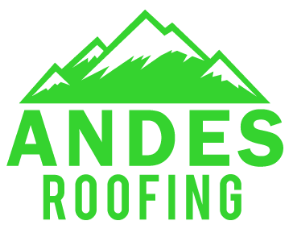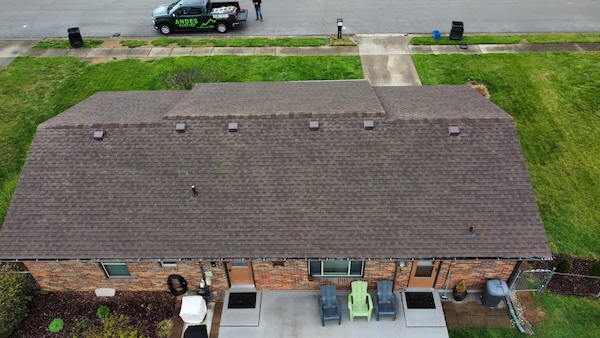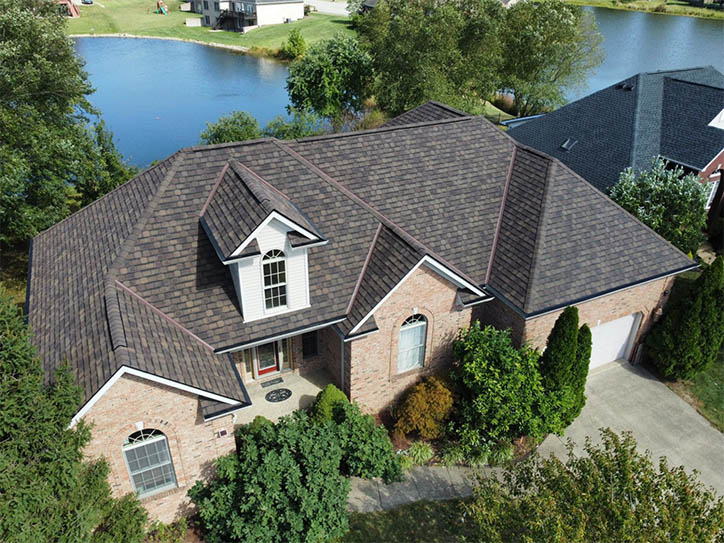As far as roof damage is concerned, it’s probably the last thing you want to deal with. But if you’ve noticed blisters or dents on your roof’s surface, it’s essential to adequately identify the problem. What could the issue be?
In this article, we’ll help you understand the key differences between roof blistering vs. hail damage. That way, you can take the necessary steps to address the issue.
Understanding the differences is essential in determining the right course of action. By identifying the specific issue that’s affecting your roof, you can seek the appropriate repairs required to protect your home. So, let’s dive into the details and discover the information required to understand your roof’s condition.
Signs and Symptoms of Roof Blistering

Roof blistering is usually visible on the surface of the roof. You may notice raised bubbles or blisters that vary in size and shape. These blisters are soft to the touch and may feel like there is air or water trapped beneath them.
In some cases, the blisters may pop, exposing the layers underneath. It’s imperative not to puncture or step on these blisters, as it could create further damage to the roof.
In addition to the visible blisters, roof blistering also leads to other signs of damage. For example, if the blisters are present near the edges of the roof, it can cause shingles to curl or lift. This compromises the integrity of the roof and increases the risk of leaks. Furthermore, if the blistering is severe, it could make the roof feel spongy or soft when walked upon.
If you suspect roof blistering, it’s recommended to have a professional roofing contractor inspect your roof. They will be able to assess the extent of the damage and provide recommendations for repairs or maintenance. Ignoring roof blistering may lead to more significant issues down the line, such as leaks, mold growth, or structural damage.
Identifying Hail Damage on Your Roof
Hail damage is another common issue that affects roofs. Hailstones that fall during a hail storm range in size— from small pebbles to large ice balls. Their impact causes serious damage to a roof’s surface. Identifying hail damage is crucial in order to prevent further deterioration of the roof.
One of the most obvious signs of hail damage is dented or cracked roof shingles. Hailstones leave distinct marks on the shingles, and if the impact is great enough, it causes the shingles to break or split.
Furthermore, hail can dislodge the granules on asphalt shingles, which exposes the underlying layers. This weakens the shingles and makes them more susceptible to moisture penetration.
Aside from the shingles, other parts of the roof may also show signs of hail damage. Metal vents, gutters, or flashing could become dented or bent due to the impact of hailstones. If you have an asphalt roof, you may also notice dark spots or bruising on the surface, which indicates damage.
It’s essential to thoroughly inspect your entire roof after a hailstorm. Doing so ensures that the damage is properly documented.
If you’re unsure whether your roof has sustained hail damage, it’s best to consult with a roofing professional. They have the expertise to assess the condition of your roof and identify signs of damage. They can also provide guidance on the necessary roof repairs or replacements needed to restore the integrity of your roof.
Differentiating Between Roof Blistering and Hail Damage
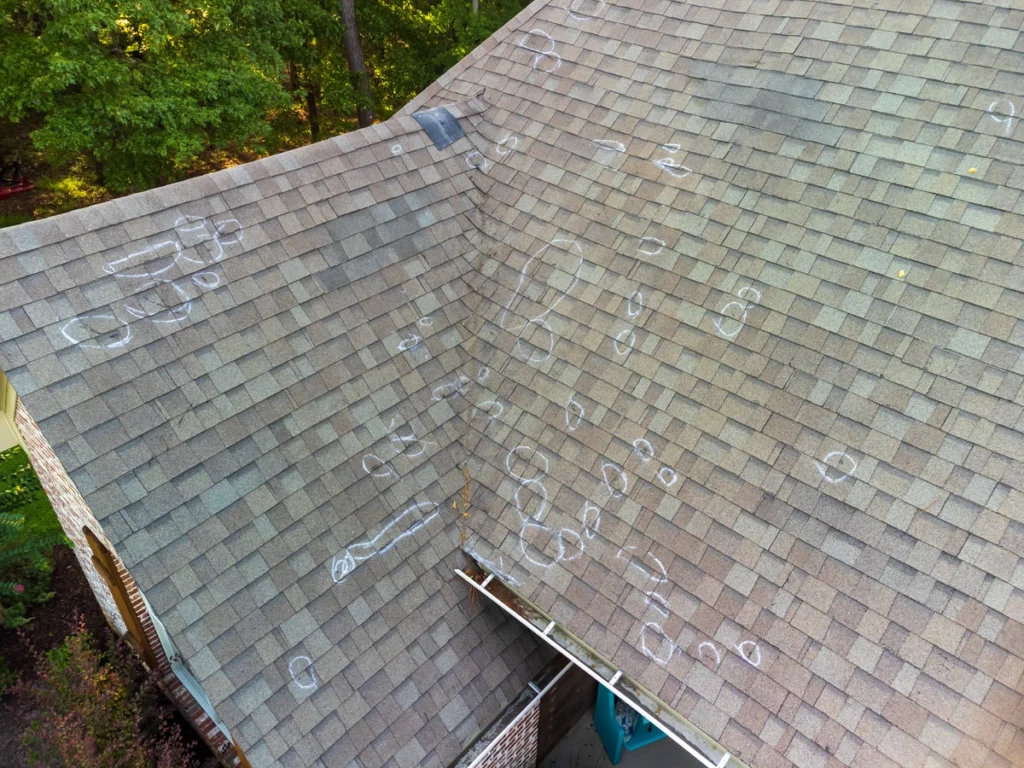
While roof blistering and hail damage cause visible marks on your roof, there are distinct differences in their appearance.
Roof Blistering:
- Raised bubbles or blisters on the surface of the roof
- Generally has a rounded, upward shape
- May appear after significantly hot weather
Hail Damage:
- Indentations on your shingles
- May look like dents
- Can be found immediately after a hail storm
- You may also find dents and scratches on your siding
- Metal components such as flashing and gutters may be bent, dented, or broken
Essentially, roof blistering has a “poked out” appearance, while hail damage has a “sunken in” appearance. If there haven’t been any hail storms in your area, hail isn’t the culprit. You’ll likely only see signs of hail damage if your roof has come into contact with hailstones.
What to Expect After Identifying Damage: 3 Steps
Once you have identified whether your roof has roof blistering or hail damage, you must take the appropriate steps to address the issue. Prompt action can prevent further damage and protect your home.
1) Document the Area
Be sure to take extensive photos and videos of the damaged areas. This will help you, later on, when it comes time to file an insurance claim.
2) Contact a Roofing Professional
If you have roof blistering, it’s crucial to consult with a professional roofing company. They can assess the extent of the blistering and recommend the necessary repairs or maintenance.
Depending on the severity of the blistering, the contractor may suggest options like patching the blisters, resealing the affected areas, or replacing the roof membrane.
For hail damage, it’s also recommended to seek the expertise of a roofing professional. They’ll examine the condition of the shingles and other roof components. Then, they’ll provide suggestions for repairs. In some cases, if the damage is bad, a full roof replacement may be necessary.
3) Talk to Your Insurance Company
If the damage has been caused by hail, sever weather, or other circumstances outside of your control, your homeowner’s insurance may help you pay for it. Be sure to contact you insurance company as soon as you have taken note of the damage.
Since the problem was caused by a severe weather event, you should be able to file an insurance claim. Be sure to ask your roofing contractor if they assist in filing insurance claims. Many do!
We’ll Handle Your Roofing Headache
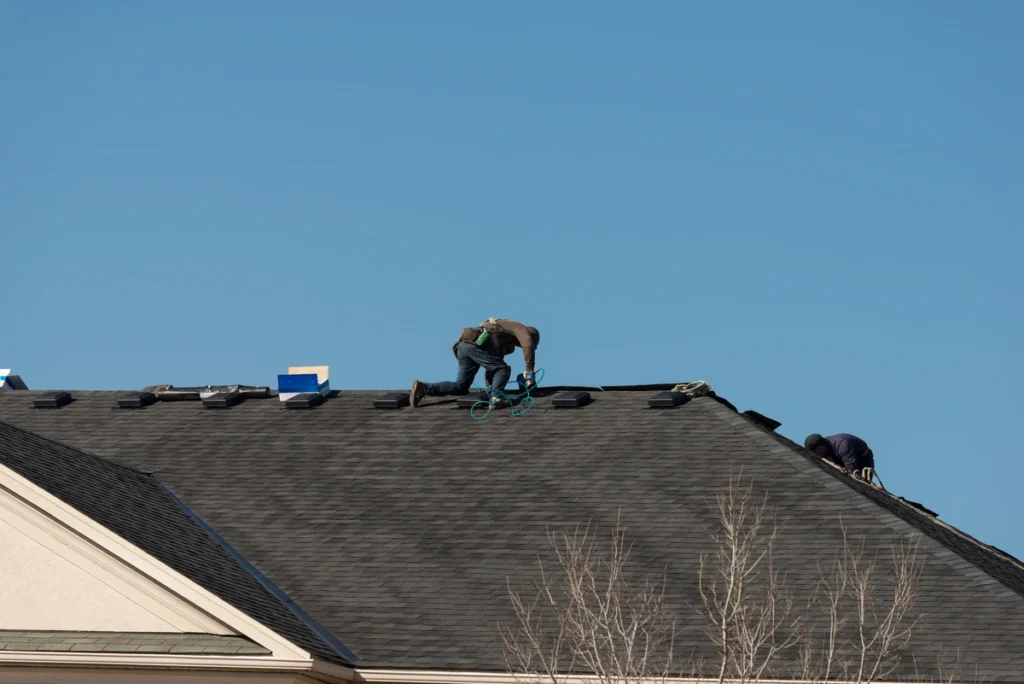
Roof blistering and hail damage are both headaches. Unfortunately, they’re problems that come with being a homeowner. On the bright side, you don’t have to deal with roofing issues on your own. We’ll handle the job for you!
At Andes Roofing, our goal is to make roof maintenance easy. Our team of skilled contractors understands how to perform roof repairs, gutter installation, and more. Not to mention, if your roof is destroyed by hail, we’ll provide storm damage repair.
So, if you’d like to get started with your roofing project, call 812-226-9313, or reach out to us on our website. We look forward to serving you!
